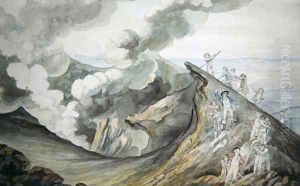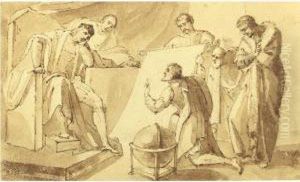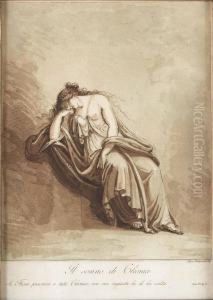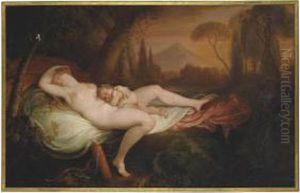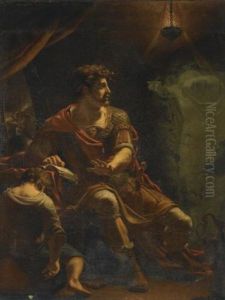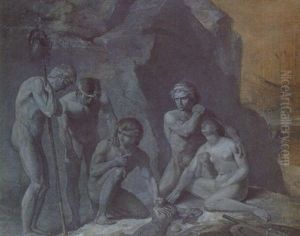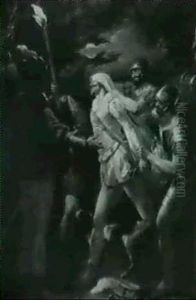Henry Tresham Paintings
Henry Tresham was a prominent British painter and art historian of the 18th and early 19th centuries, born in 1751 in Ireland. His early life and education in the arts are not extensively documented, but it is known that he developed a profound interest in classical antiquity and the Italian Renaissance, which significantly influenced his later work. Tresham spent a considerable part of his career in Italy, particularly in Rome, where he was a contemporary of other British artists who were part of the Grand Tour tradition. This period was crucial for Tresham's development as an artist, as he immersed himself in the study of classical art and architecture.
During the late 1780s, Tresham began to establish his reputation in Britain. His works often depicted historical and mythological themes, characterized by their grandeur and adherence to classical ideals. He was a member of the Royal Academy, an institution with which he had a complex relationship throughout his career, and in 1799, he was appointed Professor of Painting at the Royal Academy, a position he held until 1807. In this role, he delivered lectures that emphasized the importance of studying the art of the past, particularly the works of the Italian Renaissance and classical antiquity, as a foundation for contemporary artistic practice.
Tresham was also involved in several ambitious but ultimately unsuccessful projects, including an illustrated record of the collections of the British nobility and a series of engravings of ancient frescoes. Despite these setbacks, he continued to be an active participant in the British art scene, contributing to exhibitions and publishing on art history. His writings, although not widely remembered today, contributed to the discourse on art in his time, particularly in promoting the study of historical art as a vital component of an artist's education.
Henry Tresham's legacy is that of an artist deeply engaged with the classical tradition, who sought to bring the values of ancient art into the practice of his contemporaries. His paintings, characterized by their historical depth and commitment to classical ideals, and his contributions to art education and historiography, reflect his lifelong dedication to the arts. Tresham passed away in 1814, leaving behind a body of work that, while not as celebrated as some of his contemporaries, played a role in the development of British art and the appreciation of classical traditions.
